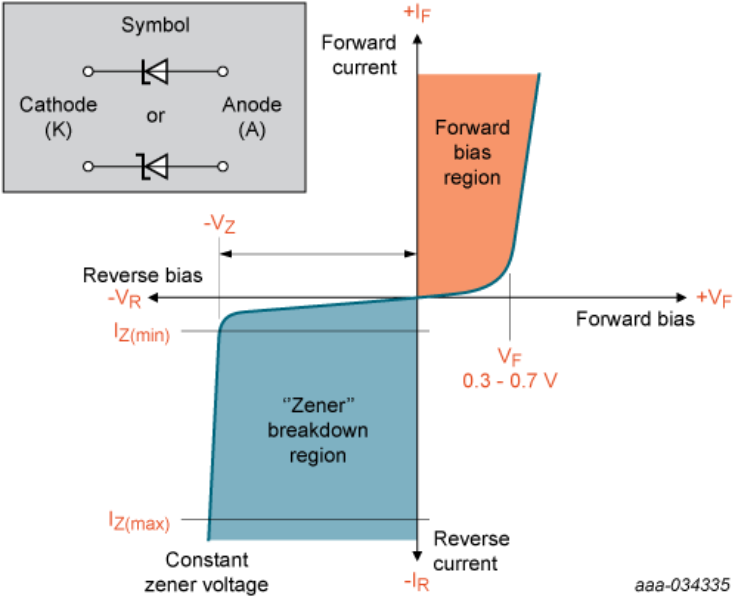One of the basic building blocks of electronic circuits, Zener diodes allow significant amount of current to flow backwards when a specific set reverse voltage, known as the Zener voltage, is reached. At or above this breakdown voltage, they operate as a constant voltage reference. Often used to generate a stabilized voltage, Zener diodes can be used for all kinds of applications where voltage levels have to be clamped or kept below a limit. Another important application area for Zener diodes is clamping of undesired over-voltages to protect MOSFETs.
Zener and Avalanche effects
For voltages up to 5 V, electrical breakdown occurs due to electron tunnelling from the valence band into the conduction band across the depletion area of the reverse bias junction. Once the field strength is high enough, the free charge carriers suddenly increase the reverse current. This effect was first discovered in 1934 by Clarence Melvin Zener, hence the name of this diode type.
Above 5 V, a different effect becomes more dominant. The electrical field across the p-n junction accelerates electrons in the transition area, creating electron-hole pairs. The holes move to the negative electrode and to get filled, while the electrons move to the positive electrode. The mobile holes and electrons can generate more charge carriers with high field strength by freeing up adjacent bound electrons. This process of generating more charge carriers can quickly become an avalanche so that a high current starts to flow if a specific reverse voltage is exceeded.

Both effects, the Zener and avalanche, are not distinguished for the naming of Zener diodes. No matter which physical effect dominates the breakdown of the p-n junction, all voltage reference diodes are referred to as Zener diodes.
Voltage tolerances
Nexperia manufacturers Zeners diode for many different voltages, ranging from 1.8 V to 75 V, with guaranteed tolerances tested at a defined reverse current. Standard tolerances are characterized as B-selection for ±2% and C-selection for around ±5%. To address the demand for higher precision, Nexperia recently introduced a broad portfolio of A-selection Zener diodes with a tolerance of ±1% .
To learn more about Zener diodes in general, you can download and read through the application note AN90031 Zener diodes - physical basics, parameters and application examples.